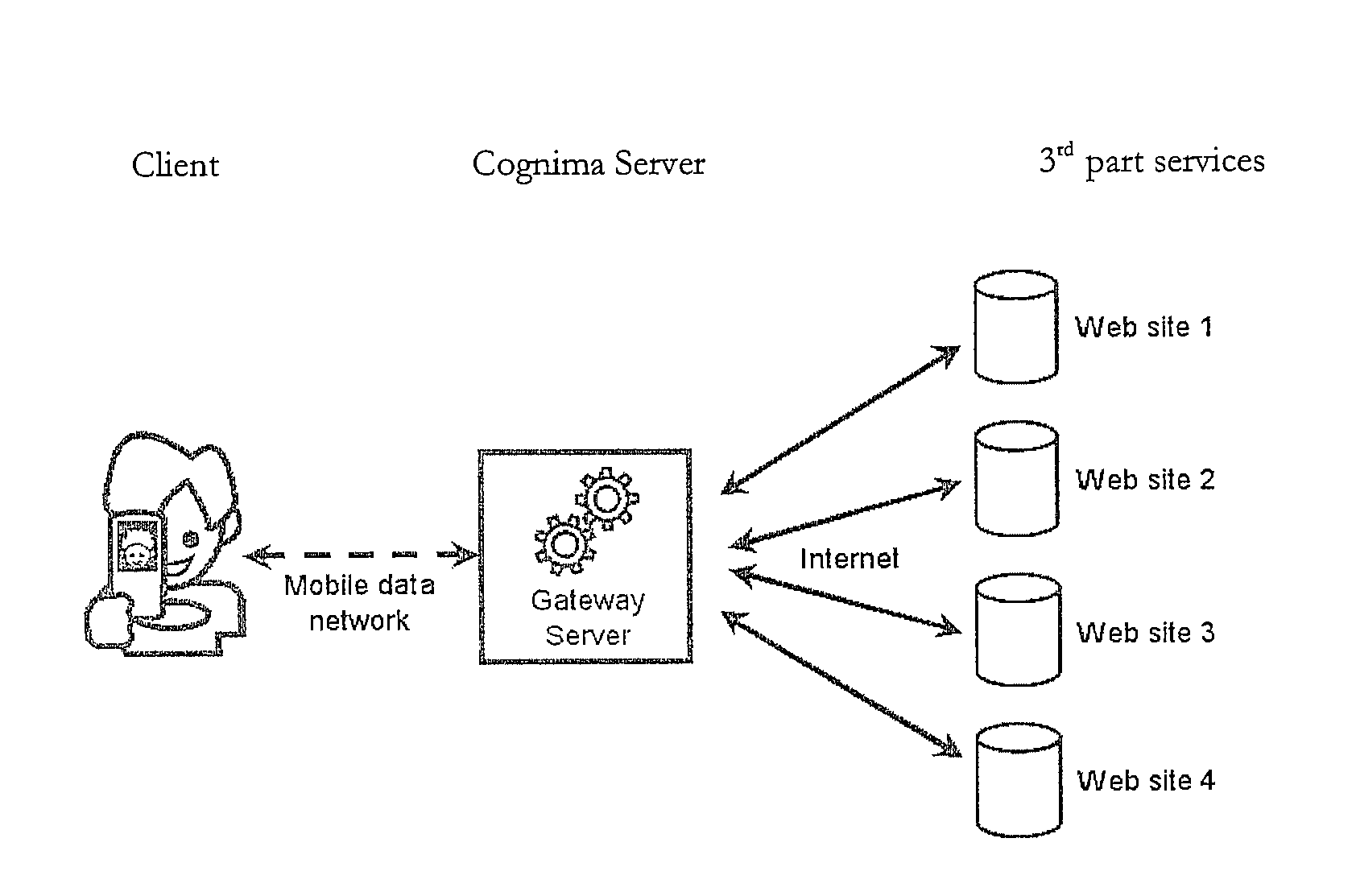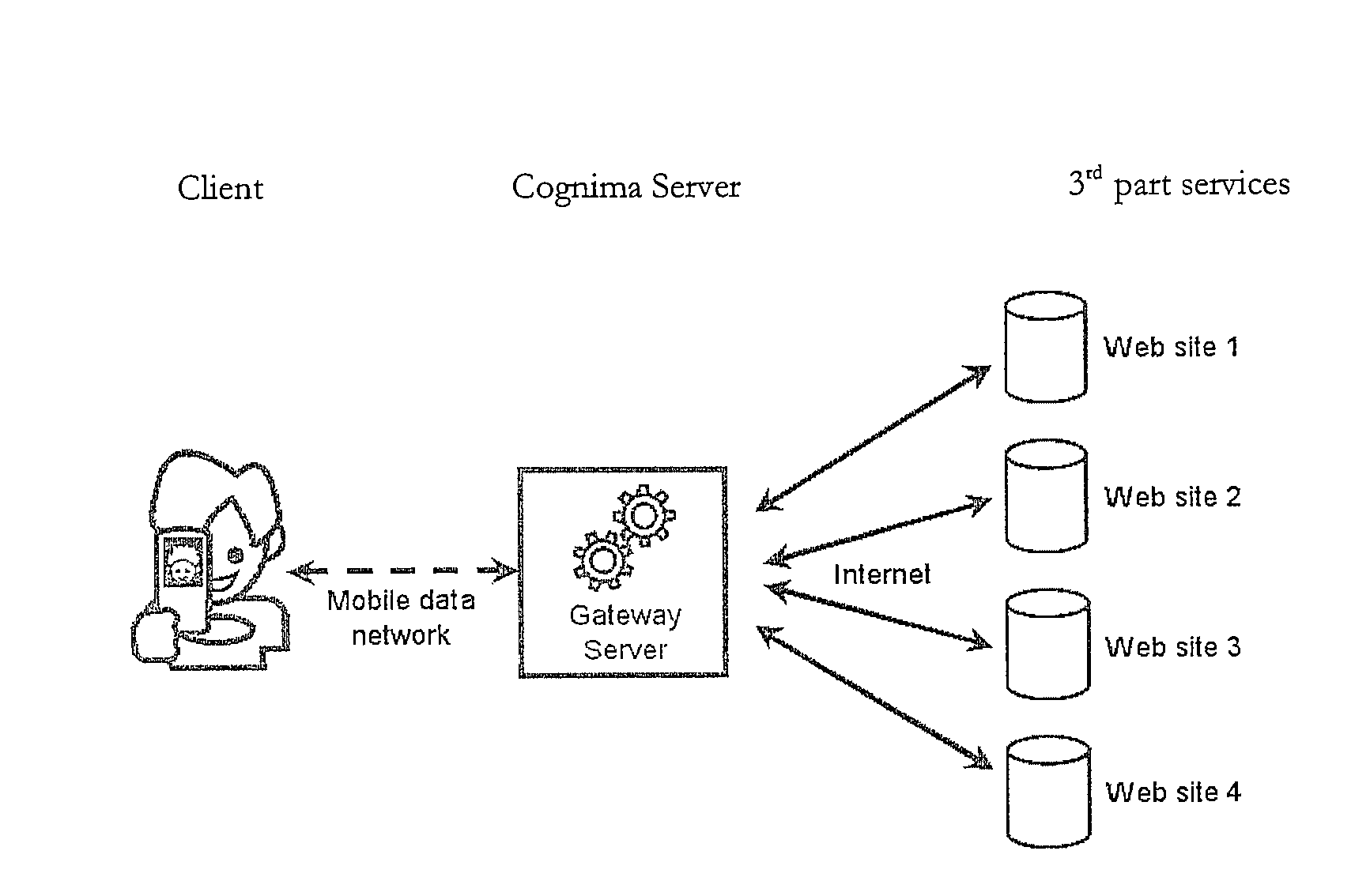Method of configuring a mobile telephone to interact with external services
a mobile telephone and external service technology, applied in the direction of electrical equipment, substation equipment, eavesdropping prevention circuits, etc., can solve the problems of limiting flexibility and choice for the end user, limiting the functionality of the end user, and being unable to be implemented, so as to achieve less testing, less rom space devoted, and less complex
- Summary
- Abstract
- Description
- Claims
- Application Information
AI Technical Summary
Benefits of technology
Problems solved by technology
Method used
Image
Examples
Embodiment Construction
[0018]In a given online application area or type (for example online photo sharing, blogging, digital music downloading, social networking, news & information services, online shopping, and dating services . . . ) there are many providers of similar services. Each offering differs slightly in the functionality it supports. This invention allows a generic software application on a mobile telephone to be used with a variety of services, dynamically changing its behaviour and resources to fit the user's choice of service.
[0019]The generic mobile telephone application does not need to know about the services that can potentially be accessed. Thus a mobile telephone application may be configured to use a service that did not exist at the time the application was installed on to the mobile telephone. This allows a mobile telephone manufacturer or mobile network operator to install the software application in devices that may sit in the sales channel for months, and still have them able to...
PUM
 Login to View More
Login to View More Abstract
Description
Claims
Application Information
 Login to View More
Login to View More - R&D
- Intellectual Property
- Life Sciences
- Materials
- Tech Scout
- Unparalleled Data Quality
- Higher Quality Content
- 60% Fewer Hallucinations
Browse by: Latest US Patents, China's latest patents, Technical Efficacy Thesaurus, Application Domain, Technology Topic, Popular Technical Reports.
© 2025 PatSnap. All rights reserved.Legal|Privacy policy|Modern Slavery Act Transparency Statement|Sitemap|About US| Contact US: help@patsnap.com


